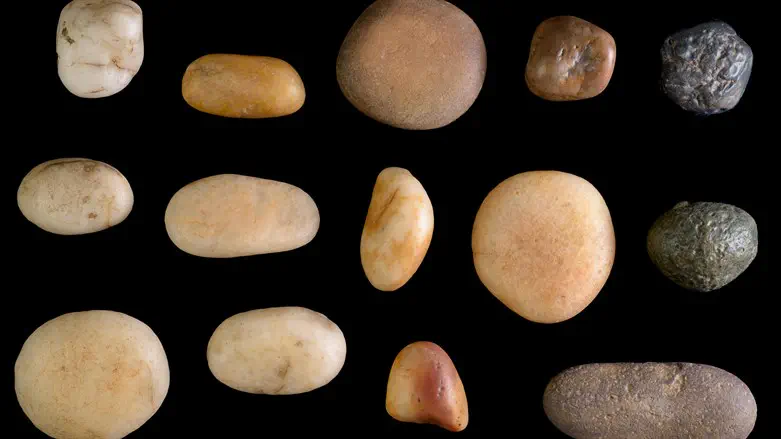
A study recently published by Dr. Itamar Taxel from the Antiquities Authority, Dr. Uzi Avner from the Desert and Dead Sea R&D, and Dr. Nitzan Amiti-Price from the Hebrew University of Jerusalem, which was published in the Journal of Material Cultures in the Muslim World, analyzed a collection of artifacts that were discovered in the late 1990s at an archaeological site in the mountains of Eilat. The researchers believe that these objects were used for magical rituals to banish the evil eye, cure diseases, and more.
According to Dr. Taxel, Avner, and Amiti-Price, "the discovery shows that, just like today, alongside belief in the official religion, people in the Ottoman period also used to use folk sorcerers."
"The objects were discovered by Motti Shemtov, a resident of Eilat, and following the discovery, an excavation was conducted at the site by Uzi Avner and Asaf Holtzer on behalf of the Antiquities Authority. The objects, which were discovered together and refer to rituals or worship, mainly include dozens of fragments of pottery rattles, most of which resemble a ping-pong ball, and they contain small stones that make a rustling sound when the rattle is moved.
Also, two miniature altar-like objects were found which were used - probably for burning incense, a statuette (statuette) of a naked woman or goddess with her hands raised in the position typical of gods and priests, several fragments of additional statuettes, and pebbles of colored quartz stones. An examination of the clay from which the various pottery objects were assembled revealed that the objects originated in Egypt. This is the first time that such a large amount of unique ceremonial objects of this type has been discovered together, and also in a temporary site, which was not used as a permanent settlement."
The objects were discovered next to the Pilgrim's Road (Arabic: Darb al-Hajj) that left Cairo, crossed the Sinai Peninsula, and continued through the present-day Eilat Mountains to the city of Aqaba - and from there to the Arabian Peninsula. The road was used from the first centuries after the rise of Islam - in the 7th century AD, until the end of the 19th century.
Along the section of the road that passed through the mountains of Eilat, several rest sites and buildings were discovered that served the pilgrims, and it seems that the main period of time in which these sites operated was during the Mameluk and Ottoman periods, starting from the 13th or 14th century onwards.
The location of the objects - on the edge of the rest site and a comparison of the objects with information from around the Muslim world - as well as the fact that these objects were found in one spot allows us to suggest that they were used for magical rituals. The objects were found broken - and may have even been broken on purpose as part of those rituals. Apparently, these ceremonies were held at the site by one or more people who specialized in folk 'magicians'. From literary sources, we know that they were in demand among people from different strata of the population. Such magic ceremonies were held day by day alongside the worship of the 'official' religion, including In the Muslim world, and it seems that the pilgrims who made their way to the holy cities of Mecca and Medina were not unusual in this respect," say the researchers.
According to Dr. Omri Barzilai, director of the southern region at the Antiquities Authority, "Dereb al-Haj road passes through the city of Eilat. The road and the sites along it will become part of a unique regional archaeological tourism route promoted by the Ministry of Tourism. The Antiquities Authority will work to develop and make the road accessible to the general public and plans to hold educational activities that will make the heritage of the place accessible to the public."
Eli Escozido, director of the Antiquities Authority, added that "as part of the Antiquities Authority's "Publication of Past Excavations" project, old archaeological excavations are published that have not previously reached scientific publication. The current research sheds light on archaeological finds and excavations that have long been forgotten and which deserve to appear in the research books. The story of Darb Al-Hajj is an example of the importance of the project."
